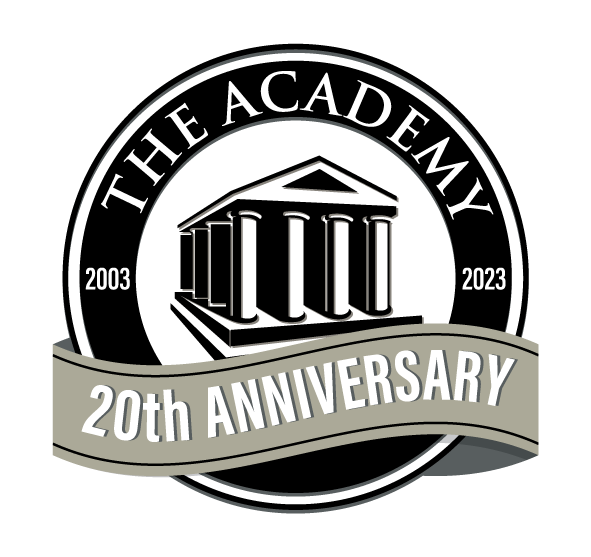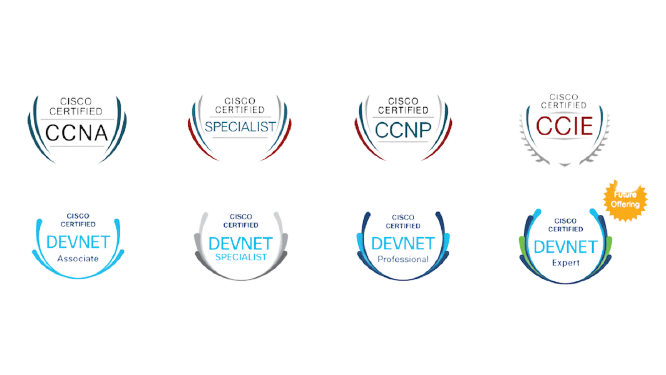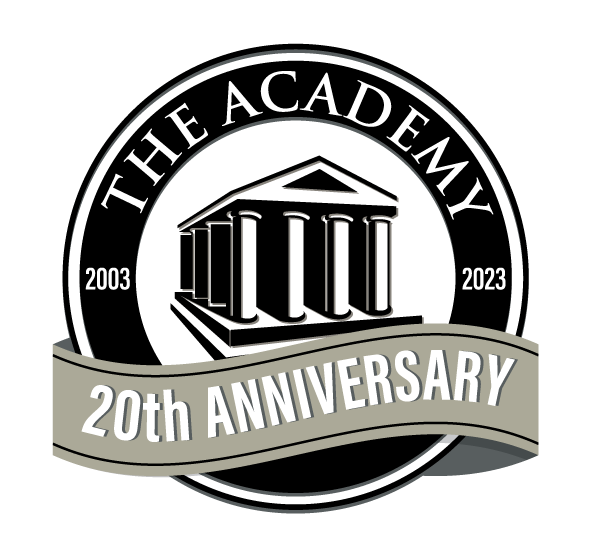Description
Duration: 3 days
About this course
CompTIA Certified Technical Trainer (CTT+) certification is for instructors who want to verify they have attained a standard of excellence in the training field. CTT+ validates the knowledge and use of tools and techniques necessary for successfully teaching in today’s learning environments.
Audience Profile
The CTT+ certification exam tests in and out of class teaching expertise, including preparation, facilitation and physical or virtual classroom evaluation. To earn the certification, two exams must be passed. In addition to TK0-201, you’ll have to pass either TK0-202, or TK0-203.
Learning Objectives
Planning Prior to the Course
Methods and Media for Instructional Delivery
Instructor Credibility and Communications
Group Facilitation
Evaluate the Training Event
Certification Exam
This training course prepares students for CTT+ Essentials – TK0-201 and CTT+ Classroom Performance Based Exam – TK0-202 or CTT+ Virtual Classroom Performance Based Exam – TK0 -203
All CompTIA CTT+ candidates must successfully complete the CTT+ Essentials exam (computer based test) and only then submit a recording of their classroom training session (CompTIA CTT+ TK0-202) or submit a recording of their virtual classroom training session (CompTIA CTT+ TK0-203) which will be evaluated and scored.
Prerequisites
This course is ideal for trainers and presenters from all industries with 6 to 12 months of trainer/instructor experience to improve their presentation skills.
What’s included?
- Authorized Courseware
- Intensive Hands on Skills Development with an Experienced Subject Matter Expert
- Hands-on practice on real Servers and extended lab support 1.800.482.3172
- Examination Vouchers & Onsite Certification Testing- (excluding Adobe and PMP Boot Camps)
- Academy Code of Honor: Test Pass Guarantee
- Optional: Package for Hotel Accommodations, Lunch and Transportation
With several convenient training delivery methods offered, The Academy makes getting the training you need easy. Whether you prefer to learn in a classroom or an online live learning virtual environment, training videos hosted online, and private group classes hosted at your site. We offer expert instruction to individuals, government agencies, non-profits, and corporations. Our live classes, on-sites, and online training videos all feature certified instructors who teach a detailed curriculum and share their expertise and insights with trainees. No matter how you prefer to receive the training, you can count on The Academy for an engaging and effective learning experience.
Methods
- Instructor Led (the best training format we offer)
- Live Online Classroom – Online Instructor Led
- Self-Paced Video
Speak to an Admissions Representative for complete details
| Start | Finish | Public Price | Public Enroll | Private Price | Private Enroll |
|---|---|---|---|---|---|
| 5/12/2025 | 5/14/2025 | ||||
| 6/2/2025 | 6/4/2025 | ||||
| 6/23/2025 | 6/25/2025 | ||||
| 7/14/2025 | 7/16/2025 | ||||
| 8/4/2025 | 8/6/2025 | ||||
| 8/25/2025 | 8/27/2025 | ||||
| 9/15/2025 | 9/17/2025 | ||||
| 10/6/2025 | 10/8/2025 | ||||
| 10/27/2025 | 10/29/2025 | ||||
| 11/17/2025 | 11/19/2025 | ||||
| 12/8/2025 | 12/10/2025 | ||||
| 12/29/2025 | 12/31/2025 | ||||
| 1/19/2026 | 1/21/2026 |
Curriculum
1.0 Planning Prior to the Course
1A Review learning objectives and match them to learner and organizational needs.
Knowledge of:
• Key content points likely to cause learner confusion or resistance
• Key characteristics of the learning environment
• Types of needs assessments, such as surveys or interviews with learners or their managers
• Learning outcomes not specified in the materials but desired by the organization or learner
• Situations in which it is appropriate to modify original learning activities and materials
• Techniques for modifying learning activities and materials to meet the needs of the organization, learner and/or situation
• Course aims and objectives in order to ensure that any modifications have been made to ensure that an adequate range of learner characteristics have been addressed (e.g., conduct audience analysis)
• Instructional design techniques to create customized training
• Available instructional resources and delivery tools in a classroom or virtual session room
Skills to:
• Research additional content information to address potential points of confusion or resistance
• Assess learner’s current skill level and compare results with course prerequisites
• Assess organizational needs for additional learning outcomes
• Analyze results of needs assessment of the learner in relation to learning objectives
• Modify learning materials to meet specific needs of an organization, learner or situation without compromising original course design
1B Create an environment conducive to learning.
Knowledge of:
• Logistical needs before the instructional session (e.g., dates of the offering; how materials will be provided [ship to learner or site, send instructions and link to download] space arrangements; adequacy of the facility; equipment; materials; learner registrations; pre-course assignments). For Virtual Trainer, this would include creating a session room, sending login instructions to users, setting user privileges, loading and testing session materials and testing all equipment
• Logistical needs after the instructional session (e.g., equipment and materials are returned, discarded, or made available for their next use; facilities are left in an acceptable condition; problems with the facility, equipment, furniture or materials are communicated to appropriate authorities). For Virtual Trainer, this includes stopping recording, saving files, closing session rooms, running attendance reports, updating learner status, document session and follow up on technical problems
• Optimal arrangement of seating and equipment to establish comfortable learning environment as required by course design, content and learners
• Optimal virtual arrangements to provide a viable learning environment consistent with the instructional design (e.g., network connection, tool capability to handle audience size, system check)
• Optimal organization of learner supplies, resources and materials (e.g., neatly organized and located at each learner’s seat or at a convenient central location). For Virtual Trainer, consolidate emails and files sent to participants
• Appropriate equipment setup to ensure a safe learning environment (e.g., trip hazards removed, power cords hidden, learning aids correctly assembled)
• Environmental options to maximize learner comfort and safety (e.g., ventilation, temperature, lighting, external noise and cleanliness)
• Environmental requirements or problems that call for notification of appropriate personnel (e.g., safety issues or equipment failure)
• Virtual environmental needs to maximize learner comfort and safety (e.g., distractions, popup windows, background noise, mute rules, quiet work zone use do not disturb sign)
• Corrective actions that should be communicated to appropriate authorities (e.g., assessment of environmental problems that need to be corrected)
Skills to:
• Review pre-course communications with learners (e.g., course announcement, confirmation, description or agenda and prerequisites and pre-course assignments)
• Alter recommended physical or virtual classroom set-up according to specific learner and organizational needs
• Confirm timings and logistics for course (e.g., scheduled breaks, meal arrangements, labs, activities outside of classroom, time zones for virtual training, materials receipt)
• Ensure that learning-related tools and equipment required for hands-on practice are properly set up and working, and verify that all learner exercises can be completed as intended
• Establish a safe learning environment including identification of emergency evacuation procedures
• Confirm with learners that the physical and virtual learning environments are comfortable (e.g., lighting, sound, conference call or VoIP audio, online tool is functioning well)
• Prepare contingency plans for unique class events (e.g., fire drill in classroom, loss of connection, some users not able to view materials)
2.0 Methods and Media for Instructional Delivery
2A Select and implement delivery methods.
Knowledge of:
• A wide variety of delivery methods (e.g., discussion, brainstorm, lecture, demonstration and role play)
• Advantages and disadvantages of each delivery method
• Characteristics of adult learners and generally accepted adult learning theories
• Different styles of learning
• Techniques for delivering instruction in a classroom environment
• Techniques for delivering instruction in a technology-delivered environment (computer lab)
• Techniques for delivering instruction in a virtual environment
Skills to:
• Use delivery methods as intended by the course designers
• Adapt delivery methods to meet a variety of learning styles
• Engage learners through multiple delivery techniques as appropriate to the material, the learners and the situation
• Organize and introduce content in a variety of ways (e.g., compare and contrast, steps in a process, advantages and disadvantages)
• Identify and implement learning activities that are relevant to the course objectives
• Monitor learner comfort level during the use of participatory activities
• Stimulate interest and enhance learner understanding through appropriate anecdotes, stories, analogies and humor
• Use activities that allow learners to review and apply content at appropriate intervals
2B Use instructional media.
Knowledge of:
• Types of media that can support and enhance learning (e.g., handouts, shared computer applications, graphics files supported by the specific virtual classroom software)
• Advantages and disadvantages of each media type
• Technology limitations associated with e-learning (e.g., use of video where low bandwidth slows delivery and access to websites that are blocked for some organizations)
Skills to:
• Use a variety of media to support learning objectives and meet learner needs
• Handle minor problems associated with each particular medium
• Enhance, substitute or create media as appropriate
3.0 Instructor Credibility and Communications
3A Demonstrate professional conduct and content expertise.
Knowledge of:
• Personal conduct and grooming acceptable to the organization and learners and appropriate to the training event
• Acceptable manners and behaviors for learning environment
• Strategies for accepting responsibility where appropriate without blaming or belittling others, the training materials or management
• Subject matter, the course plan and learning activities as prescribed by the course designer
• Learner and organizational uses of course skills and knowledge after the training
Skills to:
• Maintain consistent behavior with all learners
• Demonstrate confidence with and mastery of subject matter
• Provide and elicit from learners practical examples of how knowledge and skills will transfer to their workplaces
• Handle relevant learner inquiries on topics for which the instructor has limited expertise
• Maintain positive atmosphere and avoid criticizing the training materials, tools or other members of the training team
3B Use communication and presentation skills to facilitate learning.
Knowledge of:
• Correct vocabulary, grammar and syntax
• Appropriate colloquialisms, technical terms, acronyms and organizational jargon that can be used to clarify content
• Elements of the voice (e.g., tone, rhythm, volume, inflection and pace)
• Verbal articulation (e.g., proper pronunciation and enunciation, fluidity of speech and lack of distracting expressions)
• Non-verbal communication (e.g., use of eye contact, gestures, silence, pauses, movement and facial expressions)
• Technical non-verbal tools such as emoticons
• A variety of methods for communicating the course plan to learners (e.g., course overviews, advanced organizers or session summaries)
Skills to:
• Pronounce words correctly and use suitable grammar and syntax
• Explain and clarify content points through inflection, emphasis and pauses
• Ensure verbal and non-verbal communication is free of bias (e.g., sexual, racial, religious, cultural and age)
• Employ purposeful body language to enhance learning
• Minimize distracting trainer behaviors (e.g., playing with object in hand, making noise with change in a pocket or nervously rocking or pacing)
• For the classroom trainer, use body language and other non-verbal techniques to minimize or eliminate learner disruptions. For Virtual Trainer, use private chat and group agreements to mitigate disruptions
• Use course overviews, advanced organizers and session summaries at appropriate times to orientate learners and link key learning points
4.0 Group Facilitation
4A Establish and maintain a learner-centered environment.
Knowledge of:
• Group dynamics, development phases and facilitation techniques
• Techniques to engage learners (e.g., connect, invite, question, personalize and discuss)
Skills to:
• Open a training session in a positive way
• Communicate the course plan to the learners
• Communicate learner performance objectives as indicated by course design
• Obtain input from the learners about their personal objectives and expectations
• Reconcile any discrepancies between learning objectives and learner expectations
• Establish an environment that supports learning and maintains focus on meeting stated learning objectives
• Establish a learning environment free of bias, favoritism and criticism that optimizes the productive participation of all learners
• Manage course flow and pace activities based on learner needs while ensuring that all learning objectives are met
• Provide opportunities and assistance for learners to identify and achieve initial, intermediate and terminal objectives
• Facilitate group dynamics in a positive way, including encouraging interactions that are respectful of the rights of individual learners and redirecting unproductive digressions
• Create opportunities for learners to work with and learn from each other to attain the learning objectives while building individual learner confidence
• Handle learner disruptions as discreetly as possible
• Use virtual class tools like chat and polling to optimize learner contribution
• Use virtual class tools to achieve learning objectives
4B Use a variety of question types and techniques.
Knowledge of:
• Active listening techniques
• Types and uses of questions (e.g., open, closed, probing, hypothetical, higher order and clarifying)
• Advantages and disadvantages of each type of question
Skills to:
• Use active listening techniques to acknowledge and understand learner contributions
• Use a variety of types and levels of questions to challenge learners, involve them and monitor their progress
• Use questions that lead learners from recall to application of content
• Direct questions appropriately
• Create opportunities for learners to contribute to the discussion
• Employ activities to encourage learners to ask and answer questions\ themselves
4C Address learner needs for additional explanation and encouragement.
Knowledge of:
• Tools and techniques for determining learners’ needs for clarification (e.g., body language, learner questions or comments, asking learner to perform the application, emoticons, polling/surveying/quizzing, private chat)
• Techniques for providing positive and constructive feedback
Skills to:
• Interpret and confirm learners’ verbal and non-verbal communication to identify those who need clarification and feedback
• Determine how and when to respond to learners’ needs for clarification and/or feedback
• Provide feedback that is specific to learners’ needs
• Elicit learner feedback on the adequacy of trainer responses
4D Motivate and reinforce learners.
Knowledge of:
• Strategies to motivate learners
• Personal characteristics and learning styles of individual learners
Skills to:
• Encourage and match learner achievement to learner and organizational needs and goals
• Determine and apply appropriate motivational strategies for individual learners
• Plan and use a variety of reinforcement techniques during training
5.0 Evaluate the Training Event
5A Evaluate learner performance throughout the training event.
Knowledge of:
• Methods of assessing learner achievement of learning objectives (e.g., practical or written exercises, quizzes, exams)
• Need for multiple observations and evaluations of each learner
• Need for uniform evaluation standards for all learners
• Assessment techniques that include both formative and summative evaluation
• Post-course support methods to communicate with learners
Skills to:
• Monitor learner progress during training
• Develop, select and administer appropriate assessments that are in compliance with recognized and accepted measurement principles
• Gather objective and subjective information that demonstrates learner knowledge acquisition and skill transfer
• Compare learner achievements with learning objectives
• Suggest additional training or resources to reinforce learning objectives
5B Evaluate trainer performance and delivery of course.
Knowledge of:
• Methods to evaluate delivery of training
• Types and levels of evaluation
• Legal requirements associated with preparing reports on learners
• Organizational requirements for end-of-course reports
• Required record-keeping of individual learner attendance, activity and performance
Skills to:
• Evaluate the success of the course design, including modifications made during delivery
• Critique one’s own preparation for and delivery of a training event
• Evaluate impact of external influences on the training event
• Evaluate the effectiveness of the training to meet the learning objectives
• Use evaluation results to adjust and improve one’s own performance in next training event
• Prepare a report documenting end-of-course information
• Report recommended revisions and changes to existing materials and suggestions for new programs and activities, as appropriate
• Report information about learning, physical and virtual environments
• Submit reports to customers in accordance with contractual agreements or requests


